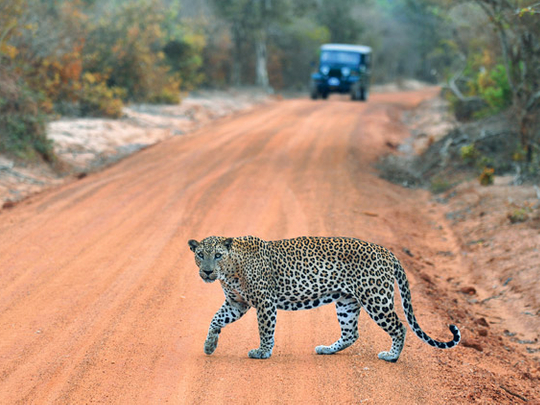
Mumbai: Leopards could vanish before the tiger if this animal is not given due attention to protect it, say wildlife experts.
Leopards across Maharashtra as well as across India are declining as the man-animal conflict over land increases even as poachers are eyeing it to replace the much-coveted tiger for its skin and body parts used in traditional oriental medicine.
This year alone, 30 leopards have died in Maharashtra while the Wildlife Protection Society of India (WPSI) has reported 207 deaths (mortality: 95 and poaching and seizures: 112) across the country compared to 290 deaths in 2009 (mortality: 129 and poaching and seizures 161)
The highest number of leopards killed was in 2000 when it shot up to 1,278. From 1994 onwards, between 70-200 leopards have been killed every year across India.
According to the WPSI, which works with government enforcement agencies to apprehend tiger and leopard poachers and traders, these figures represent only a fraction of the actual poaching and trade in leopard parts in India.
The WWF holds that the illegal wildlife trade in diverse products like deer antlers, rhino horns, tiger and leopard claws, bones, skins and whiskers, musk pods and so on are mostly meant for the international market with no direct demand in India.
India has strong laws, the Wildlife Protection Act, 1972, to protect wild animals, birds and plants but the battle is a tough one. "Leopards have become more vulnerable to poaching," says Kishor Rithe of the Nature Conservation Society, Amravati.
Working relentlessly for the conservation of tigers and other wildlife in the forest reserves of Vidarbha region, he says, "Decline in forest cover and human pressure on land is forcing the leopard to prey on domestic animals. In retaliation, farmers are poisoning carcasses that leopards feed on."
Less than a month ago, three leopards were killed in Yavatmal and offences have been already filed against the farmers, he says. Leopards are not just found in Maharashtra's four tiger reserves — Melghat, Pench and Tadoba-Andhari in Vidarbha and Sahyadri in the Western Ghats but also in 41 wildlife sanctuaries across the state.
"Leopards tend to survive even outside the forests, as in the sugar cane plantations of Ahmednagar and Pune and therefore come close to the villages. That is how the man-animal conflict begins."
As for the illegal trade, he says: "Poachers are also taking advantage of the situation since there is hardly any possibility of getting tiger skins or parts these days. Therefore, they are settling for the leopard. If you look at the quantum of seizures from poachers by the authorities, for every two tiger skins there are at least 20 leopard skins. It is a depressing picture and we fear that the leopards may decline faster than tigers."












